It’s been more than two years since I last bought a new lens, having been pretty satisfied with the trio of m4/3 prime lenses – the 17mm, 25mm, and 45mm – that are considered mandatory for serious owners of the system. The two new Olympus lenses picked up this month are labeled ‘Pro’. According to Olympus’ public information of what that descriptor means, their Pro line of lenses are developed for professional use, and provide constant f2.8 apertures. There are currently three such lenses in this line – the 7-14mm, 12-40mm, 40-150mm – and the latter two were the most recent acquisitions.
At this point, I’ve put the 12-40mm through a few weeks of use, but not for the 40-150mm. Even then, these are just the first and early handling impressions of both.
The 12-40mm occupies an odd spot among what the focal lengths of the three great m4/3 primes. The 17mm and 45mm roughly offer a full stop’s benefit over it – i.e. not a significant difference. But in the case of the 25mm, the difference is two stops, which really improves upon the range of conditions one has to take a picture. I’m of two minds about this. I imagine that I’ll continue to use primes when weight of the setup is a concern, or if I have time to properly setup a shot – e.g. if Hannah is doing her homework and is largely not moving off her chair and running about. But for catching our kids in action or when they’re running around the house, the 12-40mm is probably a more versatile option.
The 12-40mm is also a more convenient focal length range when we’re traveling. The only times I shoot wide is when it’s for a family photo with everyone in the extended family, or when I’m taking landscapes on vacation (haven’t done that since the Japan trip!). I wished it had some macro ability – similar to the very basic facility on the 12-50mm, but oh well.
No complaints about the center sharpness too. At similar apertures, it’s sharper in the center than all three primes to varying degrees, according to posted MTF resolutions at Photozone. Anecdotally though and from what my eyes can tell anyway, the 12-40mm is obviously sharper in the center than the 17mm, somewhat less so than the 45mm, and about the same as the 25mm. Moving off the center onto the borders of the image circle, the 12-40mm holds up well with smaller resolution drop-offs than all three primes. Amazing!
The 12-40mm is also much larger and heftier than the three primes. The lens’ build quality though is impressive and confidence-building, and not quite like the more plastic-y feel of the 25mm and 45mm primes. The pre-supplied petal hood also allows it to be reversed onto the lens for storage.
As for the 40-150mm. There’s an option to buy the lens without the Olympus 1.4x MC-14 teleconverter – though that’s honestly isn’t really the best thing to do. The teleconverter costs a whopping USD349 if bought separately! Locally, the price difference between the 40-150mm sans TC versus with the TC is a mere USD142. No brainer duh. The teleconverter though doesn’t work with most lenses – at the moment with just (apparently) the 40-150mm. It’s reported to work with the upcoming Olympus 300mm f4 Pro, but nope, no interest in that lens at all. The 40-150mm with teleconverter will allow focal lengths of up to 210mm or 420mm full-frame equivalent. Not as long as that crazy upper limit on my Olympus 75-300 i.e. 600mm, but you get a stop of light advantage, and also reportedly better sharpness all round.
And surprisingly, the teleconverter is reported to work quite well with the 40-150mm, putting aside the expected light loss. More to say on this later on once I put it through good use!
The supplied hard plastic hood is a design marvel. Unlike most lens hoods that have to be reversed for storing onto the lens, the 40-150mm’s hood uses a clever retractable system that does away with needing to reverse it. Basically, you twist the hood and it can be retracted. Voilà!
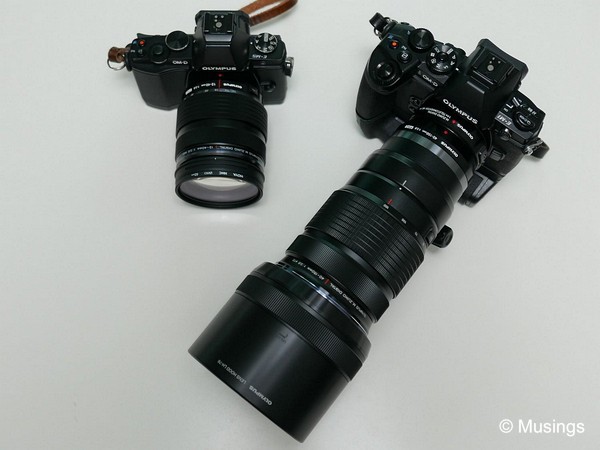
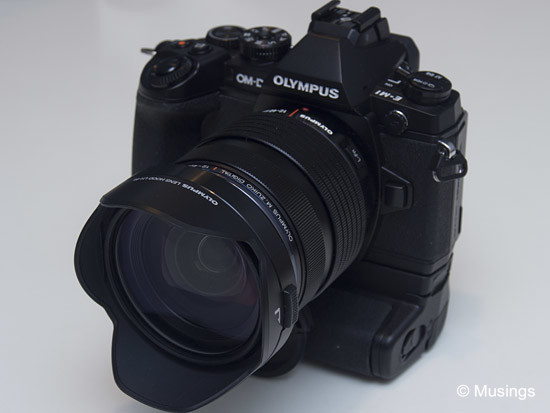
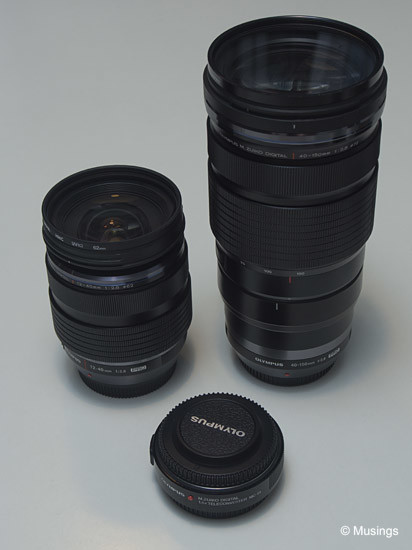
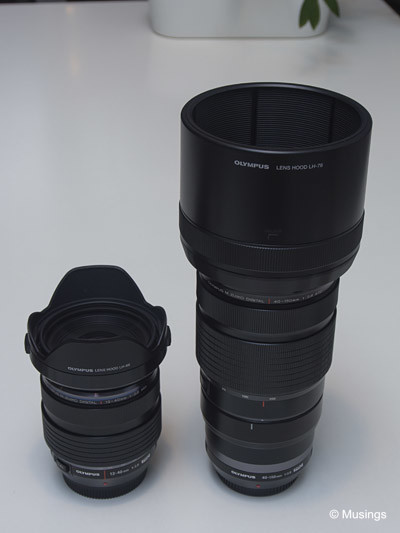
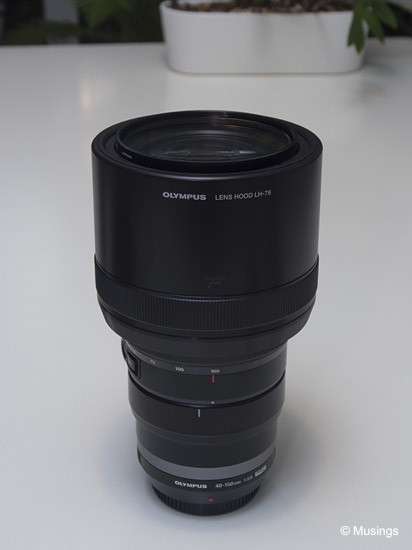
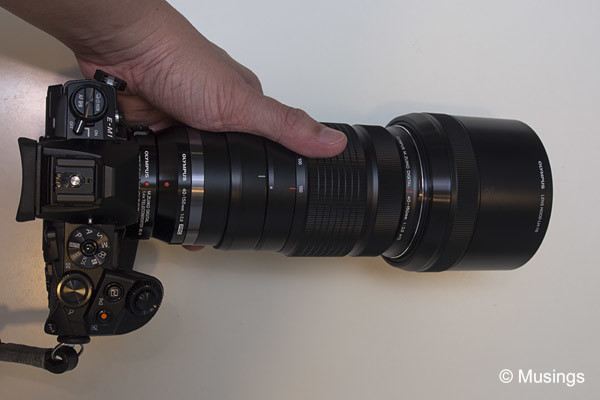
The 40-150mm f2.8 and teleconverter will be given its first real exercise this weekend at Hannah’s K2 Graduation Concert. I’ll be bringing that, alongside the 75-300mm for a field comparison. We’ve chosen seats at the Circle – we must have been the only weirdo graduating students’ parents not to sit in the normal floor stall seats closer to the stage – and only because it provides an unobstructed view of the stage for these two crazy long focal length lens to work their mojo. More to say after this weekend! :)
Recent comments